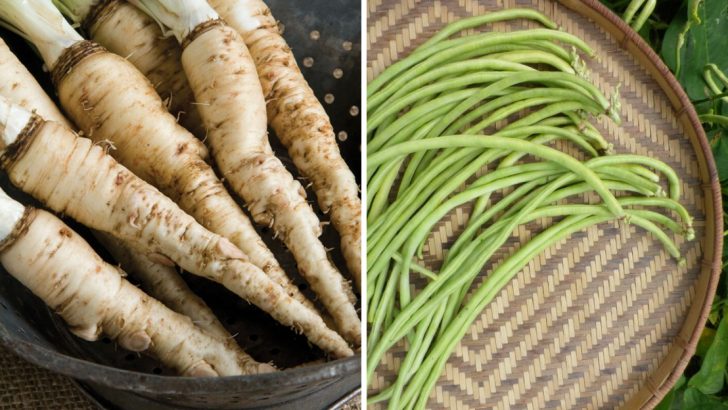The Amish community has preserved traditional farming methods for generations, growing vegetables that many modern farmers have forgotten. Their back-to-basics approach focuses on heirloom varieties that thrive without chemicals or fancy equipment.
These 16 vegetables showcase the Amish commitment to self-sufficiency and their deep connection to the land they cultivate with horse-drawn plows and hand tools.
1. Salsify

Nicknamed “oyster plant” for its peculiar seafood flavor, salsify thrives in Amish gardens where patience is considered a virtue. This long, skinny root takes nearly 120 days to mature – perfect for the unhurried Amish lifestyle.
Amish families prize salsify for its versatility in winter cooking. The tapered roots get scrubbed, not peeled, preserving their earthy goodness for hearty stews and gratins.
2. Ground Cherries

Wrapped in nature’s own little paper lanterns, ground cherries deliver a surprising pop of pineapple-vanilla flavor that Amish children hunt for beneath sprawling plants. When the husks turn papery and the fruits drop to the ground – that’s harvest time!
The plants’ sprawling habit makes them perfect for growing along fence lines where they can tumble freely without taking up valuable garden space.
3. Kohlrabi
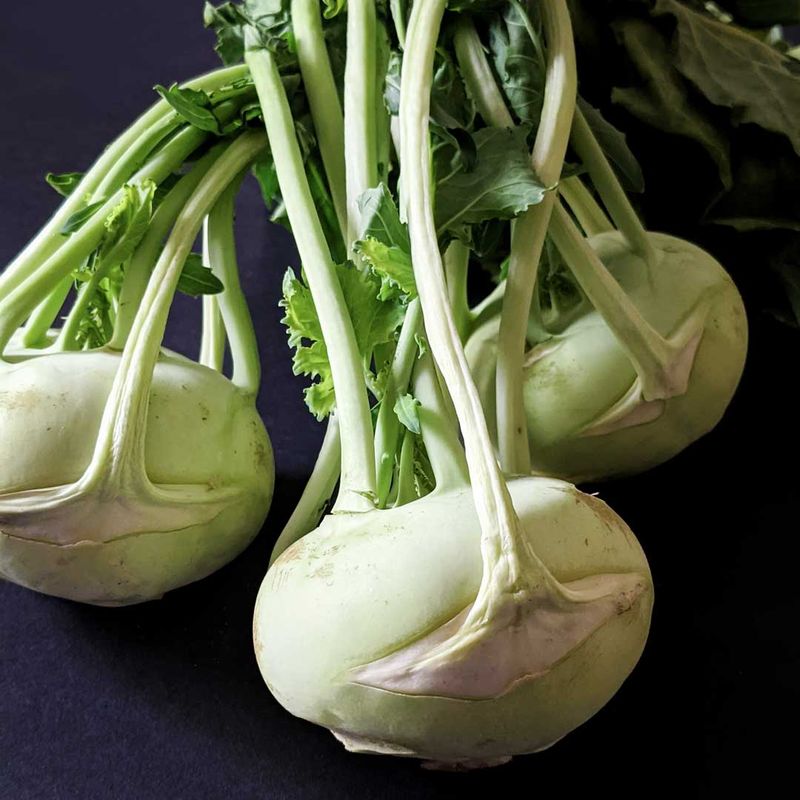
Looking like something that crashed from outer space, kohlrabi’s bizarre bulbous stem and radiating leaves bewilder first-time observers. Amish farmers smile at visitors’ confusion while slicing the crisp, apple-like flesh for afternoon snacks right in the field.
Purple and green varieties grow side-by-side in neat rows between cabbage and kale. Young Amish girls learn to harvest them small – no bigger than a tennis ball – when they’re sweetest.
4. Rutabaga
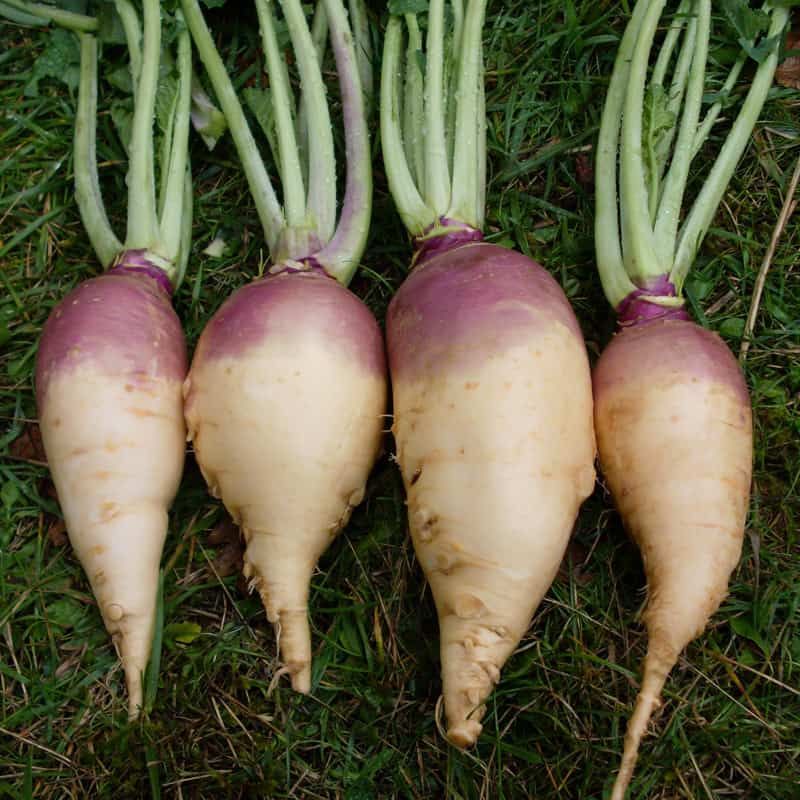
Hard as rocks and ugly as sin, rutabagas don’t win beauty contests – but Amish families treasure these yellow-fleshed roots for their staying power. After autumn harvest, they’re packed in straw-filled barrels in cool cellars, feeding families through February blizzards when nothing grows.
Sweeter than turnips but equally humble, rutabagas transform magically when roasted slowly beside a Sunday pot roast. The Amish appreciate how these roots improve after frost kisses the fields, converting starches to sugar.
5. Celeriac
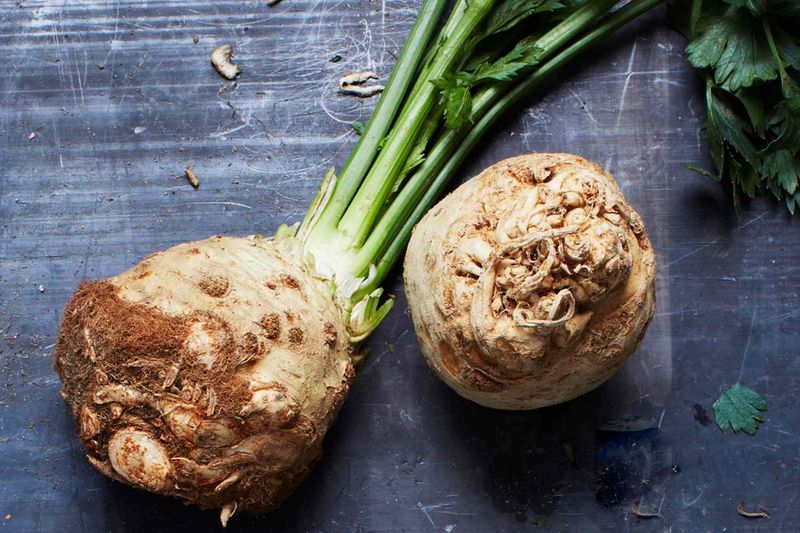
Beneath its wartlike exterior hides the sophisticated soul of celery – celeriac surprises with its elegant flavor that elevates simple Amish soups to sublime status. No Amish wedding feast would be complete without creamy celeriac soup, served with homemade bread still warm from wood-fired ovens.
Growing this knobby vegetable requires the patience Amish communities are famous for. From seed to harvest spans nearly 200 days of careful tending.
6. Parsnips
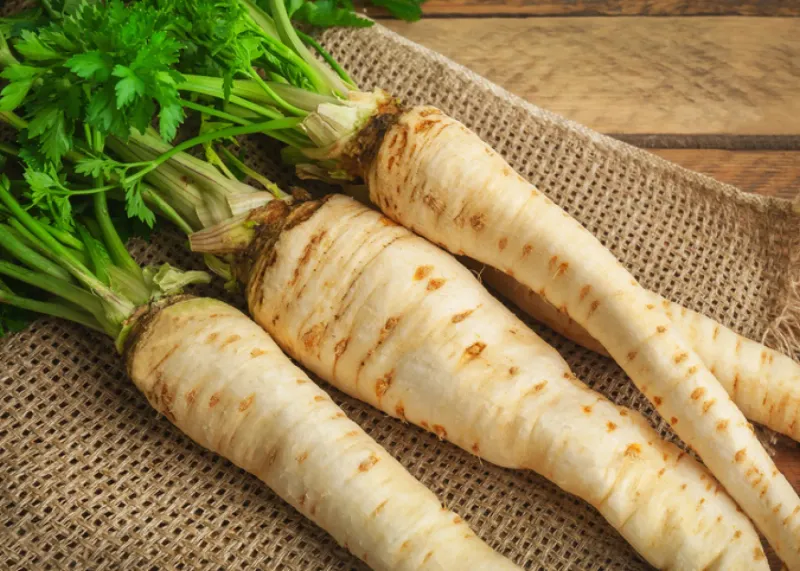
Ghostly white and carrot-shaped, parsnips embody the Amish philosophy of delayed gratification. Left in the ground until after the first hard frost turns their starches to sugar, they emerge winter-sweet and ready for roasting.
Amish farmers mark parsnip rows with tall stakes before snow blankets their fields. This allows them to locate and dig these treasures throughout winter months, breaking through frozen ground for fresh vegetables when modern grocery stores seem miraculous by comparison.
7. Jerusalem Artichokes
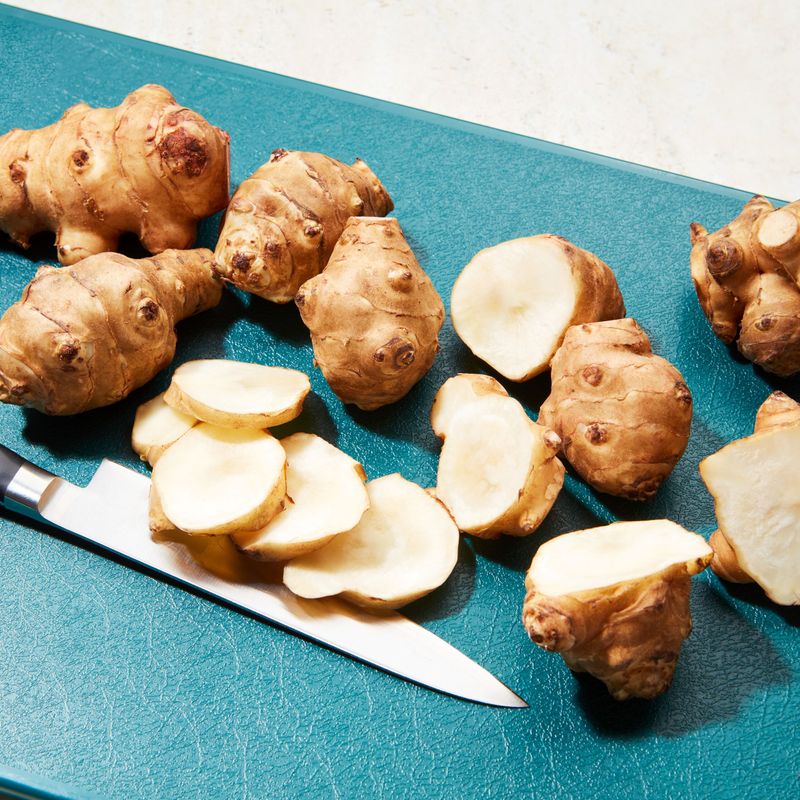
Absolutely nothing to do with Jerusalem or artichokes, these knobby native American tubers (actually sunflower relatives) produce towers of yellow blooms that brighten Amish farm edges before yielding their crunchy, nutty treasures below ground.
Once planted, Jerusalem artichokes return with stubborn persistence year after year – much like Amish traditions themselves. Children giggle over their notorious digestive effects while parents value their reliable production without replanting.
8. Scorzonera
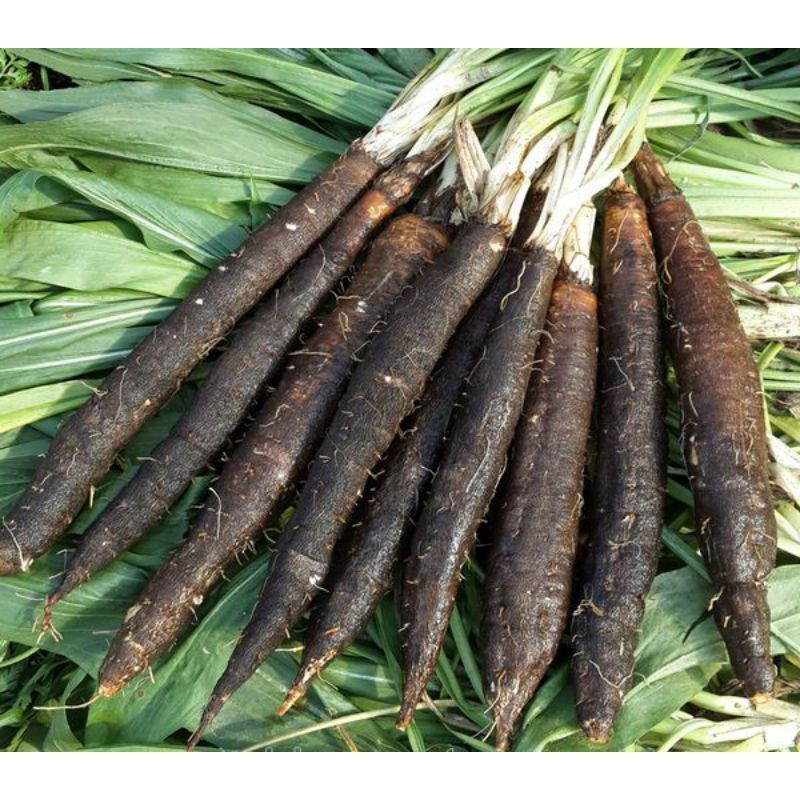
Disguised in coal-black skin that belies its bright white interior, scorzonera embodies the Amish belief that true value often hides beneath humble exteriors. This slender root vegetable grows straight and deep, requiring the rich, stone-free soil that generations of Amish farmers have cultivated.
Preparing scorzonera becomes a winter evening activity, with families gathering to scrape rather than peel the delicate roots. Amish cooks simmer them gently in milk with a pinch of nutmeg – a preparation unchanged for centuries.
9. Hubbard Squash
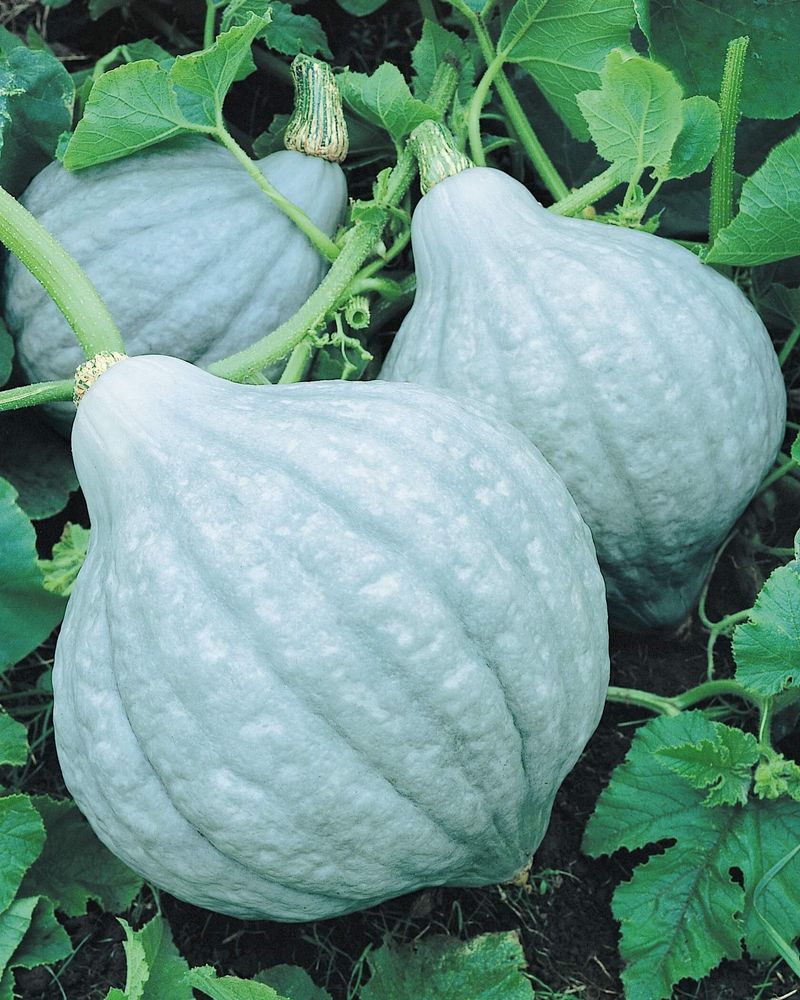
Mammoth blue-gray Hubbard squashes dot Amish fields like boulders in autumn, often weighing 15 pounds or more – nature’s perfect storage containers. Their rock-hard shells require splitting with axes before revealing sweet orange flesh that flavors winter meals for months.
Amish families grow these giants specifically for their extraordinary keeping qualities. Properly cured, a single Hubbard can last until May in a cool cellar, providing vitamin-rich meals long after other stores dwindle.
10. Mangelwurzel
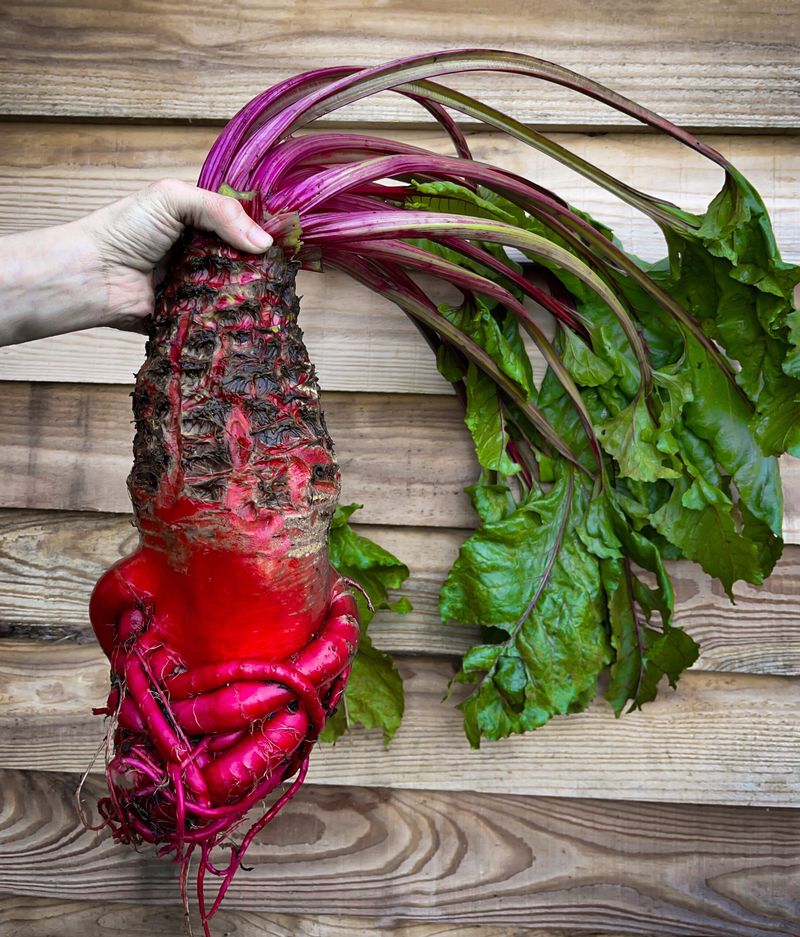
Stretching the definition of “table vegetable,” these enormous beets – often weighing 20 pounds each – serve dual purposes in Amish communities where nothing goes to waste. Humans enjoy the tender tops as nutritious greens while livestock feast on the massive roots throughout winter.
Growing mangelwurzels requires minimal attention but maximum space, making them perfect for the expansive Amish farms. Their vivid magenta flesh stains hands purple during harvest – a temporary badge of honor among Amish children helping with the gathering.
11. Luffa Gourd
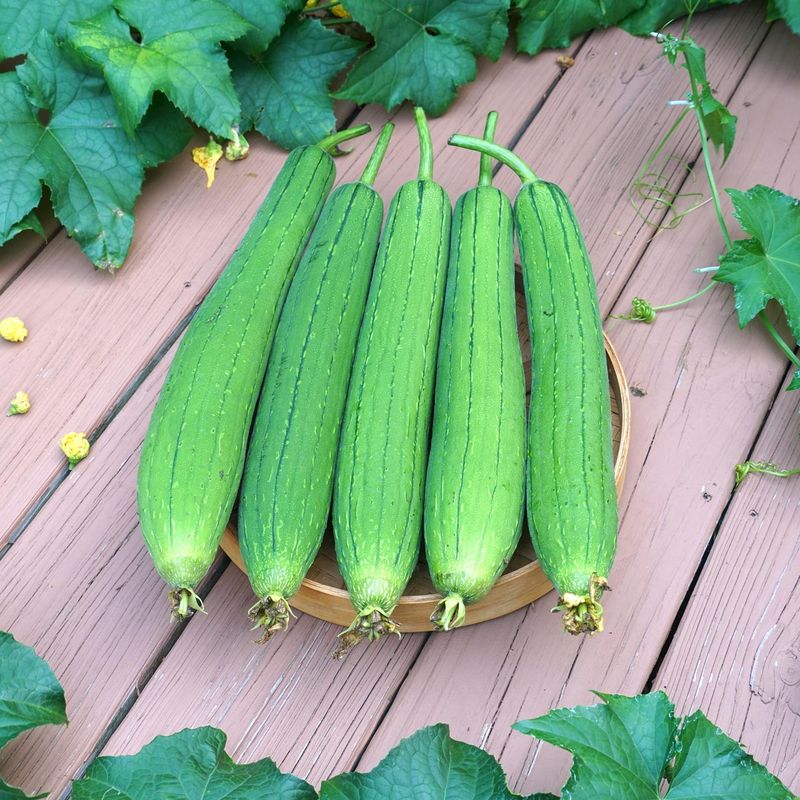
Young and tender, luffa gourds grace Amish summer tables in stir-fries and soups. Left to mature, these remarkable vegetables transform into natural bath sponges – demonstrating the Amish commitment to practical multipurpose plants.
Growing on sturdy trellises beside barns, luffa vines produce prolifically with minimal care. Amish women harvest some young for immediate cooking while marking others with yarn to mature into sponges.
12. Amish Paste Tomatoes
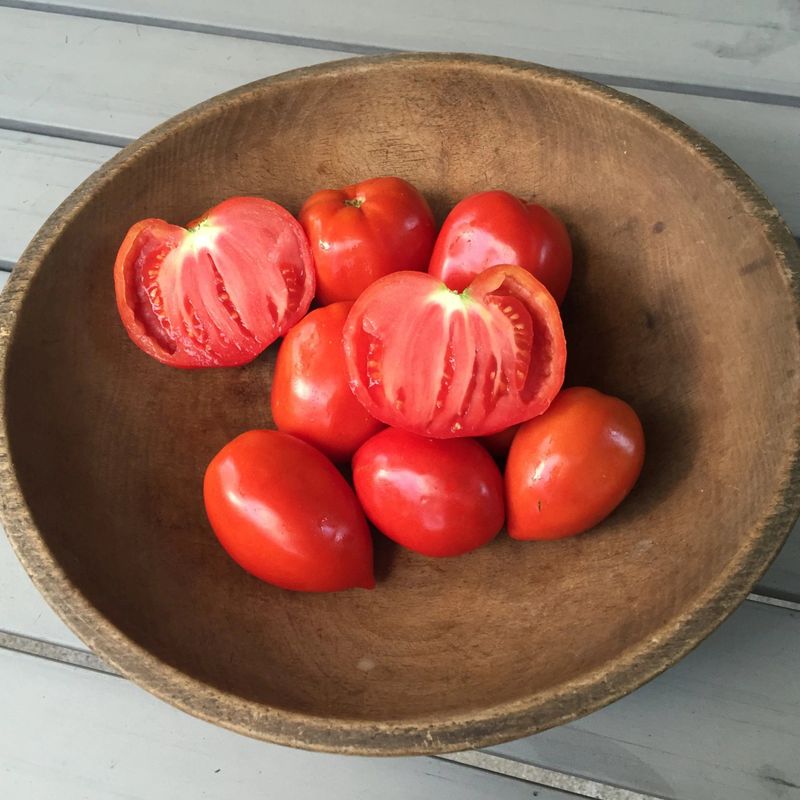
Misshapen, deeply ridged, and absolutely bursting with flavor, Amish Paste tomatoes look nothing like their supermarket cousins. These heirloom fruits have been passed through generations of Amish families specifically for their rich flavor and low water content – perfect for transforming into winter’s canned bounty.
Canning days become community events when these tomatoes ripen. The distinctive heart-shaped fruits signal summer’s peak abundance in Amish communities.
13. Yardlong Beans

Stretching up to three feet long, these dramatic beans drape like green garlands from tall trellises in Amish gardens. Children compete to find the longest specimen, holding them up like measuring tapes against their heights.
Despite their showstopping length, yardlong beans remain tender when properly picked young. Amish cooks snip them into manageable pieces before adding to stir-fries and soups, appreciating their distinctive nutty flavor.
14. Chicory Root
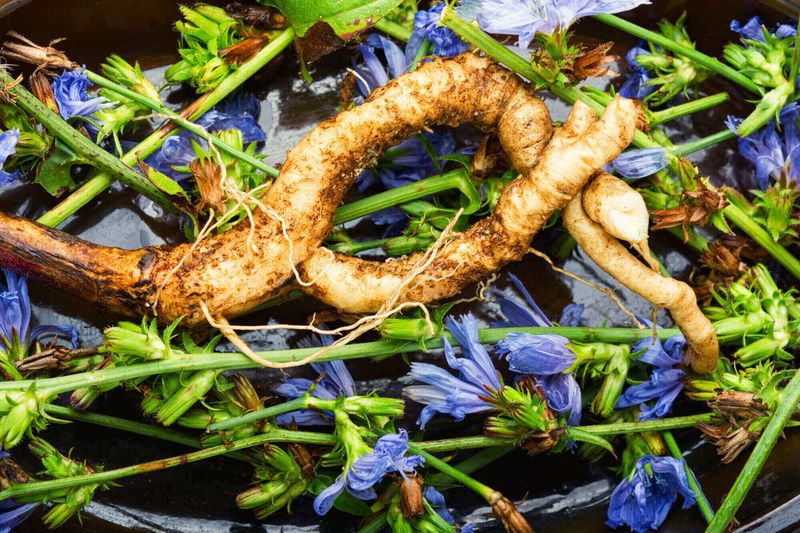
Bright blue flowers mark chicory plants in Amish meadows before they’re dug for their coffee-substitute roots. During World War II when coffee was scarce, Amish families already had their alternative growing wild along fencerows.
Harvested in fall, the roots get scrubbed, chopped, roasted until dark brown, then ground for brewing. The resulting drink offers a deep, earthy flavor without caffeine – perfect for Amish communities where stimulants are often avoided.
15. Lovage
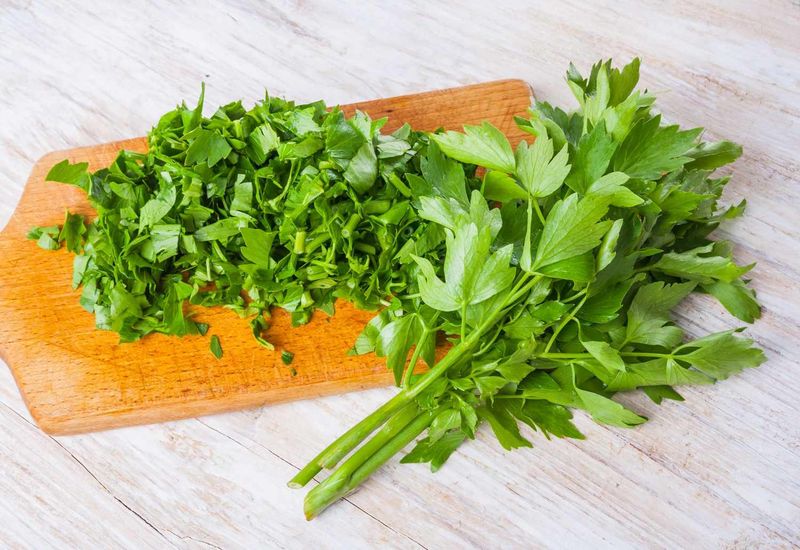
Towering up to six feet tall, lovage commands attention in Amish herb gardens with its glossy leaves and hollow stems that taste intensely of celery. One plant produces enough to flavor soups all summer while still providing seeds for winter dishes.
Amish cooks prize lovage for its versatility – leaves for salads, stems for stocks, seeds for baking, and roots for medicinal teas. This multi-purpose approach reflects Amish values of thrift and resourcefulness.
16. Walking Onions
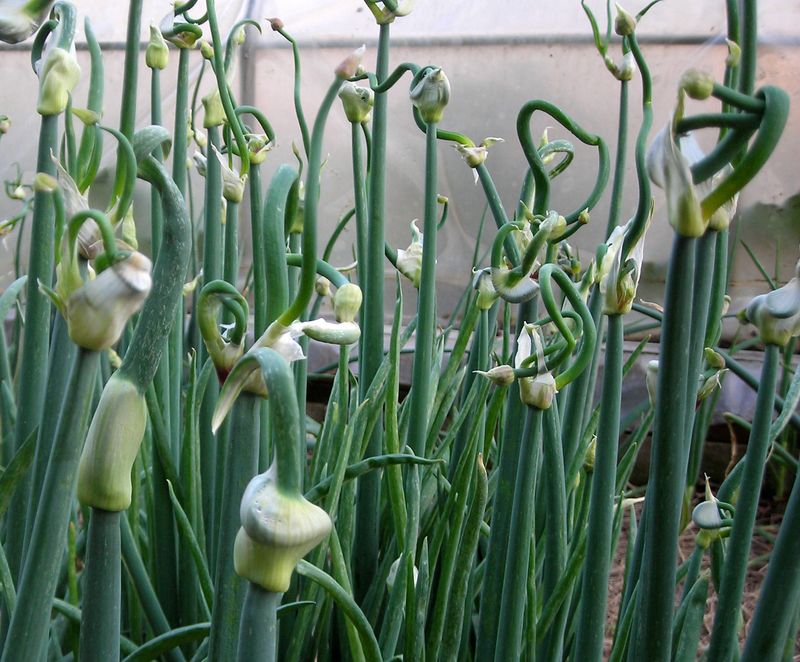
Defying conventional gardening logic, walking onions literally plant themselves by producing bulblets at their tops that grow so heavy they bend to the ground and root themselves. This nomadic behavior gives them their curious name and explains why they’ve remained Amish garden staples for generations.
No need for seeds or careful storage – these perpetual onions march across garden beds year after year. Amish gardeners simply redirect them when they wander too far.

